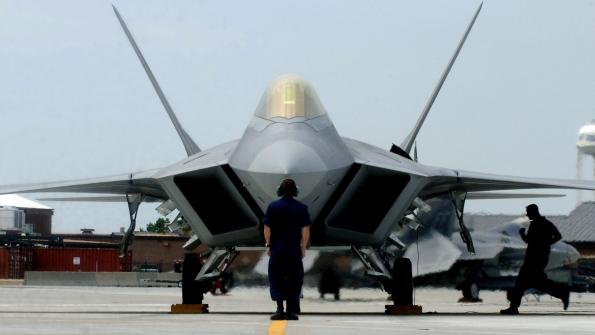次期戦闘機開発計画、アメリカとの共同開発に決定か

日本は次期戦闘機開発について、アメリカを主要な共同開発国として選定し、もうひとつの候補とされていたイギリスとはごく一部の技術協力関係に留まる見通しであると日経新聞が報じた。
発展型データリンクの共有といった、米軍とのインターオペラビリティをより高められることがこの選定の理由だと同紙は伝えているが、情報源は明らかにされていない。
複数のアメリカ企業が参画するとみられ、日本の予算により実施されるこの開発計画に対し、ボーイングとロッキードマーチンが名乗りを上げている。
同紙によれば、各社が提案している現行機種の改良型にはならないようだ。これは、これまで報じられてきた、F-22をベースにF-35のシステムを盛り込んだ機体をロッキードマーチンと国内企業が共同開発するという計画ではなくなることを意味する。
以前は「将来戦闘機」と呼ばれていた、この次期戦闘機は2030年代の配備を見込んでおり、現行のF-2を更新する予定だ。防衛省の構想によると、同機は長い航続距離と大型の内蔵ウェポンベイを持つ非常に大型の機体となっている。
記事によると、レーダー・センサー類・電子戦システム等を制御するミッションシステムは日本側が開発することとしており、これにより将来的なシステムのアップグレードを日本が主導できることが重要視されている。参画する主要な国内企業は三菱重工業・東芝・IHIになる見込みだ。
三菱重工業は古くから日本の戦闘機製造を担っており、東芝はレーダーを含む電子機器、IHIは日本の主要エンジンメーカーだ。
アメリカ・イギリス両国との共同開発を進める可能性は消えたと記事では報じている。その代わり、日本はイギリスとの技術協力により米英の技術を相互に補完しあえる関係を構築できないか探っている。
これにより、イギリスのテンペスト次期戦闘機開発計画においてパートナー国に提案されている、部位レベルの開発に日本が参画する余地が残されているといえる。
今回の次期戦闘機開発において、もしイギリスが共同開発国として選定されていた場合、主要な協力企業はBAEシステムズになるとみられていた。
記事ではトランプ大統領も本計画に大きな関心を寄せていると報じた。これはおそらく、開発計画に米国企業を参画させたいということだろう。しかし、記事の他の部分を含めこのような情報は日本政府筋から出てくるはずだが、同紙は情報源には触れていない。
以上は、Bradley PerrettがAerospace Daily & Defense Reportいた記事です。Aviation Week NetworkのAerospace Daily & Defense Reportをもっと知りたい場合、こちらをクリックして下さい。
Japan has decided to work mainly with U.S. partners in developing its Next Generation Fighter (NGF), with only limited technical cooperation with Britain, the other contender, the Nikkei newspaper said.
A need for greater interoperability with U.S. forces, including sharing advanced data links, is the key reason for the choice, the newspaper said, citing no sources.
Several U.S. companies will be involved in the program, which Japan will pay for, it added, noting that Boeing and Lockheed Martin had offered to help develop the aircraft.
Proposed adaptations of current designs will not be used, the Nikkei said. That seems to rule out a reported proposal in which Lockheed Martin and Japanese industry would greatly modify the F-22 Raptor and fit it with systems from the F-35 Lightning.
The NGF, formerly Future Fighter, is intended to enter service in the 2030s and replace the Mitsubishi Heavy Industries (MHI) F-2. The defense ministry envisions a very large aircraft with long endurance and a large internal missile load.
Japan will develop the mission system to control such equipment as the radar, other sensors and electronic warfare systems, according to the report, which adds that Japanese control over modifications to the resulting fighter is a high priority. The key Japanese companies are to be MHI, Toshiba and IHI.
MHI is Japan’s traditional fighter builder. Toshiba makes electronics, including radars, and IHI is the country’s main aero-engine company.
The possibility of cooperating with both the U.S. and Britain was rejected, the Nikkei said. Instead, Japan will look at how it can cooperate technically with Britain, with the aim of the two countries complementing each other.
This seems to leave room for peripheral involvement in the British Tempest fighter project, in which the proposed development arrangement would allow partner countries to share only parts of the aircraft.
BAE Systems has been the main prospective corporate partner in the case of Japan choosing to work with Britain.
President Donald Trump is taking a keen interest in the NGF, the Nikkei said—presumably meaning that he wants Japan to contract with U.S. companies to help develop it. That information, like the other content of the report, would have had to come from Japanese officials, but the newspaper did not say so.